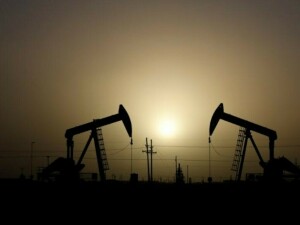From mosques, to homes and streets, Pakistanis are increasingly seeing the light and realising that year-round sun may be a cheap if partial answer to an enormous energy crisis. "It's the best thing I bought this winter," says Sardar Azam, a former civil servant retired to a river-side home in Pakistani-administered Kashmir, showing off his water-heating solar geyser installed on the terrace.
"The biggest advantage is that you spend money once and it runs on sunlight which is free," Azam added. Pakistan needs to produce 16,000 megawatts of electricity a day but only manages 13,000 megawatts, according to the Pakistan Electric Power Company. The shortfall means that millions endure electricity cuts for up to 16 hours a day, leaving them freezing in winter and sweltering in summer while hitting industry hard, exacerbating a slow-burn recession.
Voters say it is their biggest single concern, secondary to the war against al Qaeda and the Taliban, and so the government has been increasingly vocal about redressing the problem as it eyes elections within a year. "I think all our friends are encouraged to understand the real energy crisis that is in Pakistan. We can't afford to be selective of where we receive our energy supply from," Foreign Minister Hina Rabbani Khar said this month.
At the time, she was referring to Pakistan's determination to build a pipeline and import gas from Iran, regardless of US threats of sanctions, but the message was clear: on the energy front, Pakistan needs any help it can get. Arif Allaudin, who heads the Alternate Energy Development Board, would like to see more of that help coming from renewable sources, saying there was a 2.4 million megawatt potential for solar energy alone in Pakistan.
Niaz Ahmed Kathia, director of private company Alternate Energy Systems, said abundant and free sunshine was the answer to Pakistan's energy woes. "Energy is our biggest issue, more than terrorism, and if we replace our one million tubewell pumps with solar ones, we can save 7,000 megawatts," Kathia told AFP at the demonstration of a solar well in the capital.
The majority of Pakistan's tubewell pumps, which pump out underground water, run on the strained national grid or on diesel power. There is no pretence that solar power is the only answer, but this month the prime minister ordered the government to provide solar electricity in remote villages far from the national grid. The government described renewable energy as the "investor's choice" and said the private sector has offered to produce 1,500 megawatts a day.
BR100
11,814
Increased By
90.4 (0.77%)
BR30
36,234
Increased By
874.6 (2.47%)
KSE100
113,247
Increased By
609 (0.54%)
KSE30
35,712
Increased By
253.6 (0.72%)
























Comments
Comments are closed.